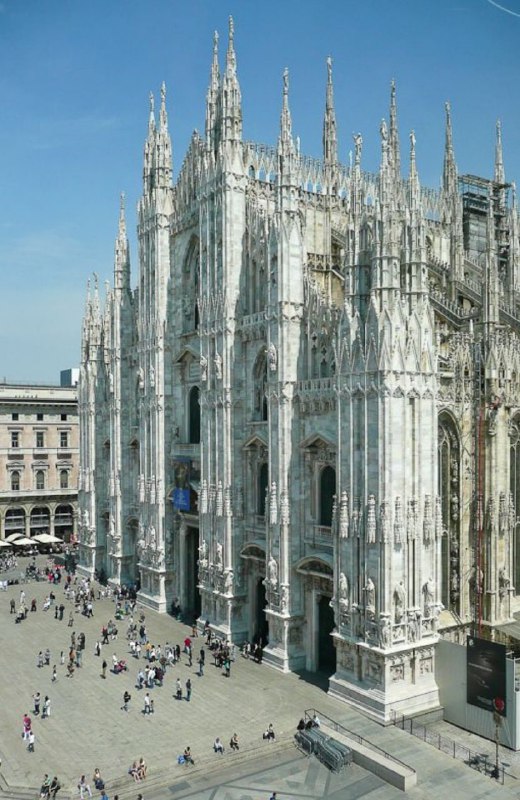🏛 Why did humans stop building wonders?
This is one of those perennial questions and the answer is quite obvious: democracy can’t construct wonderous beauties like this because it’s not what democracy is geared toward doing
Most of what we look at as examples of the good, the true, and the beautiful comes from well before “our democracy” became a thing
There are a few counter-examples that prove the rule, but, generally, beautiful things came before 1840 or so, with a few remnants of that Halycon Era, as Lord Ernest Hamilton termed it, being built as late as the 1920s, the so-called Indian Summer of the English Aristocracy
The best example of this is in Great Britain’s country houses, particularly those in southern and northern England
Most of those beautiful buildings, some of the most marvelous and stunningly gorgeous architectural feats to ever grace the world, were originally built in the Elizabethan-Glorious Revolution Era, then updated and made the beauties they are today in the Victorian Era
Great examples of this are Highclere (Downton Abbey in the eponymous show) and Chatsworth (Pemberly in Pride & Prejudice)
Both are the summit of architectural grace and beauty, and they were created because that is what aristocrats direct excess resources toward: monuments to beauty
While architecture is the longest-lasting and so best-known example of this, others abound. The London Season, for one, and horse breeding/racing for another
In each case, the beautiful is cultivated and directed toward its best and most noble outcome, whether a horse bred over generations for the Derby or a young peer’s daughter trained to be presented before the King for the season. Another is fox-hunting: it requires tremendous training of the hounds, excellent handling of a horse, and dressing well in a way that accentuates one’s natural grace and beauty is required
Democracy, by contrast, does none of that
England after the 1911 Reform Bill of Churchill and Lloyd George is the best example: instead of the vast wealth of the nation being directed towards bettering is characteristic and aristocratic great things, the wealth was destroyed by death duties and what remained was taxed to pay for welfare programs
Now, particularly after Attlee and Wilson, England has little new beauty, and instead has an overtaxed populace that pays for a strained National Health System
In other words, aristocracy directs its resources toward greatness, particularly the architectural greatness of the sort that we still admire
Democracy, in contrast, directs resources toward things the lowest common denominator, or mob voter, likes. That generally means welfare programs, food stamps, etc. Things that ostensibly make “the little guy’s life easier”.
Another great example of this is the American Space Program
The original incarnation of NASA was the last great gasp of the Heritage American ideal. Instead of flowing toward the British ideal of Country House life, ours flowed toward techno-industrial achievement in its greatest form: the Apollo program
Then Kennedy, the American proto-aristocrat was murdered
Johnson and his voters cared more about Great Society welfare than Apollo-style achievement. Nixon just wanted votes, and democracy wanted welfare, the EPA, etc.
So, instead of setting the stars, we got food stamps.
That’s where the cathedrals went. All of that beauty was built because the money flowed to it rather than whatever iteration of food stamps is in vogue (with the exception of Rome, wealthy enough to have a grain dole and monumental architecture)
So, you can have Chatsworth or food stamps, Hagia Sophia or the NHS, but not both
🧵 https://fxtwitter.com/Will_Tanner_1/status/1826283040743854218
Why did humans stop building wonders?
This is one of those perennial questions and the answer is quite obvious: democracy can’t construct wondrous beauties like this because it’s not what democracy is geared toward doing.
Most of what we look at as examples of the good, the true, and the beautiful comes from well before “our democracy” became a thing.
There are a few counter-examples that prove the rule, but, generally, beautiful things came before 1840 or so, with a few remnants of that Halcyon Era, as Lord Ernest Hamilton termed it, being built as late as the 1920s, the so-called Indian Summer of the English Aristocracy.
The best example of this is in Great Britain’s country houses, particularly those in southern and northern England.
Most of those beautiful buildings, some of the most marvelous and stunningly gorgeous architectural feats to ever grace the world, were originally built in the Elizabethan-Glorious Revolution Era, then updated and made the beauties they are today in the Victorian Era.
Great examples of this are Highclere (Downton Abbey in the eponymous show) and Chatsworth (Pemberley in Pride & Prejudice).
Both are the summit of architectural grace and beauty, and they were created because that is what aristocrats direct excess resources toward: monuments to beauty.
While architecture is the longest-lasting and so best-known example of this, others abound. The London Season, for one, and horse breeding/racing for another.
In each case, the beautiful is cultivated and directed toward its best and most noble outcome, whether a horse bred over generations for the Derby or a young peer’s daughter trained to be presented before the King for the season. Another is fox-hunting: it requires tremendous training of the hounds, excellent handling of a horse, and dressing well in a way that accentuates one’s natural grace and beauty.
Democracy, by contrast, does none of that.
England after the 1911 Reform Bill of Churchill and Lloyd George is the best example: instead of the vast wealth of the nation being directed towards bettering its characteristic and aristocratic great things, the wealth was destroyed by death duties and what remained was taxed to pay for welfare programs.
Now, particularly after Attlee and Wilson, England has little new beauty, and instead has an overtaxed populace that pays for a strained National Health System.
In other words, aristocracy directs its resources toward greatness, particularly the architectural greatness of the sort that we still admire.
Democracy, in contrast, directs resources toward things the lowest common denominator, or mob voter, likes. That generally means welfare programs, food stamps, etc. Things that ostensibly make “the little guy’s life easier”.
Another great example of this is the American Space Program.
The original incarnation of NASA was the last great gasp of the Heritage American ideal. Instead of flowing toward the British ideal of Country House life, ours flowed toward techno-industrial achievement in its greatest form: the Apollo program.
Then Kennedy, the American proto-aristocrat was murdered.
Johnson and his voters cared more about Great Society welfare than Apollo-style achievement. Nixon just wanted votes, and democracy wanted welfare, the EPA, etc.
So, instead of setting the stars, we got food stamps.
That’s where the cathedrals went. All of that beauty was built because the money flowed to it rather than whatever iteration of food stamps is in vogue (with the exception of Rome, wealthy enough to have a grain dole and monumental architecture).
So, you can have Chatsworth or food stamps, Hagia Sophia or the NHS, but not both.
Source

